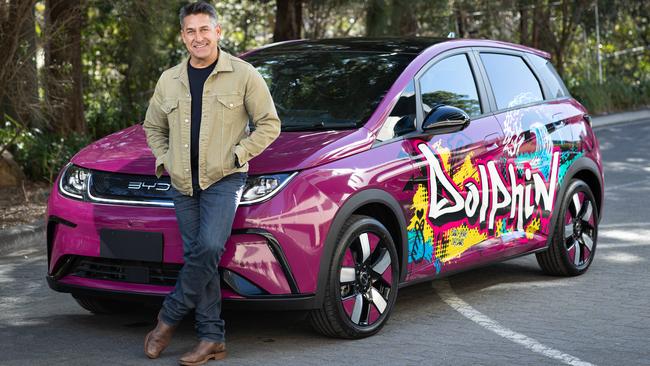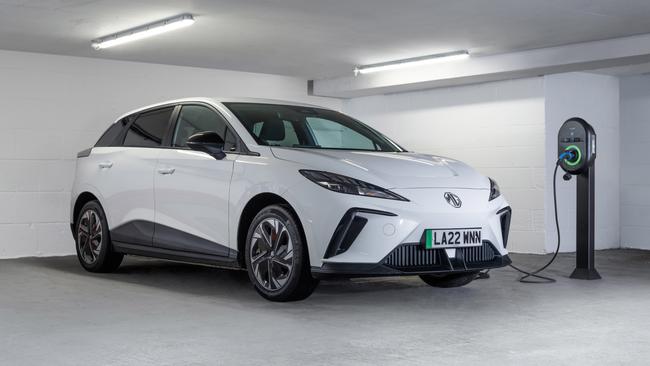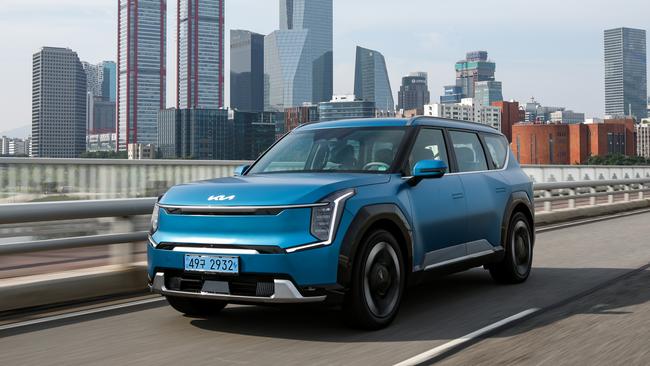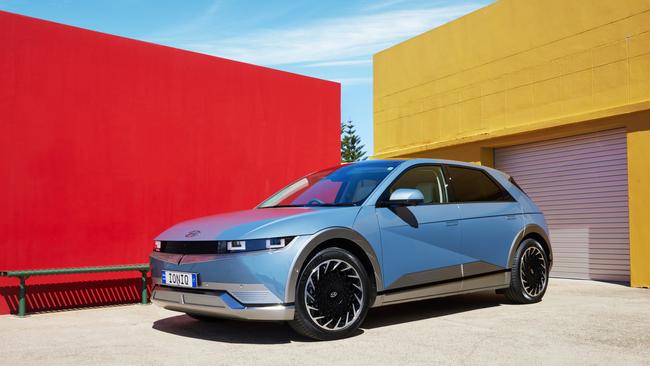Why electric cars are cheaper than ever
A new breed of electric cars threatens to shake up Australian roads with a daring approach to personal transport.
Motoring News
Don't miss out on the headlines from Motoring News. Followed categories will be added to My News.
Electric cars have dropped so significantly in price, some now cost less than petrol alternatives.
In the past month, three battery-powered hatchbacks have gone on sale for less than $40,000 as competition between car companies intensifies.
Chinese brands MG, BYD and GWM have undercut the likes of Tesla by more than $20,000 with electric cars that promise to make green motoring more affordable than ever.

“As soon as one car company priced their car under $40,000, rival car companies followed,” Electric Vehicle Council chief executive Behyad Jafari said.
“We went from zero to three cars priced under $40,000 within a couple of weeks.
“As more electric cars enter our market that helps drive down prices, and as that price drops it means more people are able to get hold of one.”
MG was the first manufacturer to introduce a sub-$40,000 electric car in the MG4, which went on sale in late June for $38,990 plus on-road costs.

Rival brand BYD (Build Your Dreams) undercut MG by $100 with its Dolphin electric car two days later.
Then GWM (Great Wall Motors) reduced the price of its Ora hatchback to $39,990 plus on-road costs in July, a $4000 reduction that kept it within spitting distance of the MG and BYD.
Real-world prices vary from state to state in line with EV incentives. The cheapest electric car in Australia today is a BYD Dolphin delivered to Queensland, where customers benefit from a $6000 state discount that reduces its price to $32,890 plus on-road costs – less than $35,000 drive-away.
TV host and landscaper Jamie Durie invested in BYD’s local operation to help Aussie motorists reduce carbon emissions.

“Accessibility is the key here,” he said.
“If you don’t make environmental innovations accessible to everyone, you’re not going to make an impact.
“If you drive a standard petrol car you need to be planting between 14 and 17 trees a year just to be absorbing your carbon emissions in a year.
“I don’t know many blokes other than myself who plant this many trees.”
Sales of electric cars have more than quadrupled for the year to date, rising from 9680 in the first six months of 2022 to 43,092 in the same period this year.
The rising popularity of electric cars has been driven in part by a fringe benefits tax concession that makes electric cars considerably easier to finance.

Secretary and director of the National Automotive Leasing and Salary Packaging Association Rohan Martin said that under the FBT exemption, together with state subsidies, the cost to own and operate an electric car is roughly equivalent to a petrol vehicle worth half as much.
A four-year lease for an electric BYD Dolphin worth more than $40,000 drive-away works out at less than the payments for the cheapest petrol car on sale – the MG3 Hatchback, priced from $19,990 drive-away.
A Melbourne-based motorist who earns $100,000 and drives 15,000 per year can expect to pay about $616 per month to drive the Dolphin, and $623 per month for the petrol MG3.
Mr Jafari said the electric vehicle sector is shifting away from expensive luxury cars.

“Five years ago the most common electric vehicle sold was a $120,000 Tesla Model S,” he said.
“Now we have cars in the $30,000 price bracket, right up to much more expensive cars.
“It shows you how quickly things are changing.”
COMING SOON
Household names such as Ford, Toyota, Subaru and Volkswagen are preparing to introduce their first electric cars in coming months. They will be joined by the first electric family four-wheel-drives in the Kia EV9 and Hyundai Ioniq 7, along with electric convertibles in MG’s Cyberster and the next-generation Porsche Boxster.
WHY CHINESE EVS ARE CHEAP
There are a host of reasons why Chinese electric vehicles are cheaper than other brands.
– The sheer size of the Chinese market. China is the world’s leading producer of EVs, which creates huge economies of scale. That means their production cost per vehicle is much lower than other countries.
– The Chinese lead the world in battery technology, so they aren’t dependant on sourcing from third-party suppliers. The battery makes up roughly a third of the price of a new EV.
– Lower labour costs. Chinese factory workers earn less than $6 an hour.

– Raw materials. China dominates the global production supply of Cobalt, Lithium and Graphite, essential battery ingredients. This makes it easier and cheaper for Chinese car makers to produce EVs.
– Less range. The cheaper Chinese EVs on sale have less range than their rivals, roughly 310km to 350km. Hyundai’s Ioniq 5 has a range of more than 500km. More range requires bigger batteries, which drives up the cost.

– Supply and demand. Chinese makers have strong supply of new EVs, while some rivals are still struggling with choked supply lines.
– Margins. Chinese brands are willing to shave their profit margins in an effort to gain a foothold in the local market.
– Materials. Generally, cabin materials aren’t of the same quality, while some of the engineering isn’t as advanced as rivals.
Originally published as Why electric cars are cheaper than ever


